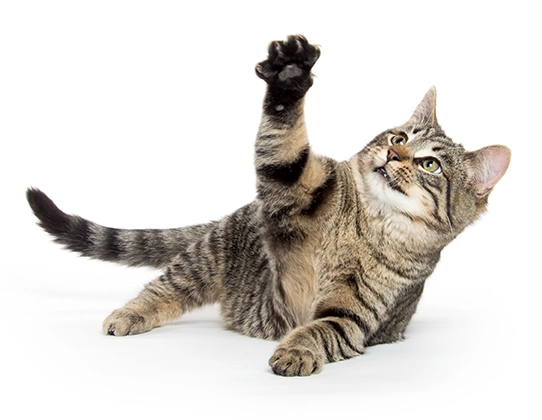Transitioning Your Cat to Raw Food
So you’ve decided to feed your cat raw food. Congratulations! This is the single biggest difference you can make for an obligate carnivore like a cat. Cats are true carnivores, the term ‘obligate’ implies that it is not optional for them to eat animal protein, it is compulsory. A natural, balanced raw diet made from human food grade meat ingredients with high quality supplementation will ensure your cat eats the closest thing it can to its biologically appropriate ancestral diet. Follow these simple steps for a seamless transition from processed to natural food.
In the Beginning
The challenge for some adult cat owners wishing to transition their cats from dry or commercial food is that their cats show little interest in raw food. Sometimes this is purely palatability related and a different brand of raw food may work, but more often than not it has to do with the fact that cats appear to imprint on food and do not recognise raw food as being food if they are not accustomed to it. Kittens on the other hand, usually readily take to a raw food diet with little trouble.
The Process
The more processed the diet of your cat is, the more you may need to do some convincing and the longer the process may take, but it is well worth the effort!
Step One: From Dry to Wet Food
- If your cat is not used to eating wet food, then the first step is to introduce them to this. Hide a teaspoon of any wet food underneath the kibble, expect it not to be eaten it if they really are not wet food fans. But persist, eventually they will begin to associate the smell with their dry food as we begin to imprint them with wet food.
- It may take a few days (or even weeks), but persist, they will eventually eat it. Do not mix the food, layer it, if you mix it they may refuse to eat entirely, which is not what we want.
- If you add too much new food and the smell is too strong they may also refuse, so use really small amounts initially, well masked by their current food. If they continually reject one type of wet food then try a different brand.
Step Two: From Wet Food to Raw Food
- The process is exactly the same as moving from dry food to wet food, you simply substitute the wet food for raw food!
- Both processes are always easier if your kitty does not have free access to kibble, so it is best to limit this during your transition process. A cat will almost always choose the food it was weaned on as its food of preference, so if you really want your cat to eat real food, then limiting or eliminating kibble is helpful.
Some General Tips…
- While most cats do ultimately like variety, when you begin it is best to start with one type of food until your cat is familiar with their new diet. Our Chicken Meal for Cats is recommended.
- If you currently only feed dry food, it a good idea to remove free access to kibble when starting this process, put down a nominal amount of food in the morning and evening to begin to train your cats to have mealtimes for when you feed wet or raw food. Twice a day for adult cats and three times a day for kittens.
- It is best to introduce new foods with a food that your cat really likes and has a positive association with. If you can avoid fish based foods, that is preferable.
- A cat who doesn’t eat for 24 hours can run into issues, this is not recommended, if your cat refuses to eat what you offer for more than one meal, then be sure to let them eat some of their usual food, do not starve your cat into eating.
- Don’t remove your water bowls, your cat will still need a small amount of water even on wet or raw food.

